Sozo: An Interview with Nathan Navarro
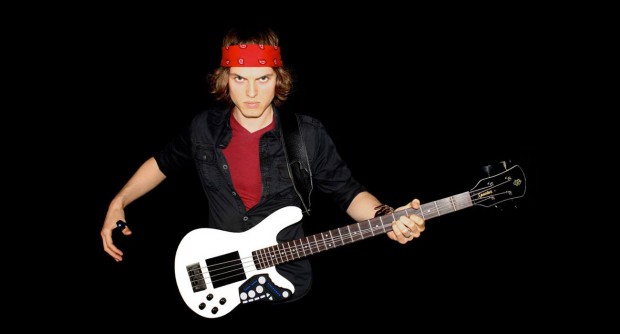
Nathan Navarro has been a favorite on No Treble for several years, and it’s obvious why. His innovative videos and incredible use of effects have captured the attention of millions of viewers with popular covers and originals. The bassist’s sound has evolved over several years, and that sound can be heard on his new EP, Sozo.
Born and raised in Southern California, Navarro picked up the bass at 14 years old as a freshman year in high school. A friend helped find him find his passion in music, especially with bands that prominently featured the bass. He went to Berklee in 2009, stayed for a couple years before leaving to focus on his band Pinn Pannelle. It was during his first year at college that he started his popular YouTube channel. “[The first video] was a super lo-fi solo that I had written,” he explains. “It was nice to people say they liked it, so I thought I’d do more. I ran with it and it just kind of grew. I keep doing it because people like it and share it with their friends.”
Sozo is Navarro’s second album, following up on 2012’s They Came From the Sky. The 5-track EP is a musical roller coaster that blends rock and electronica for a very modern sound. Navarro pulled in a host of talented musicians to round out the album, including guitarists Felix Martin and Ian Smith, drummers Ana Barreiro and Lisa Fazenbaker, and keyboardist/vocalist Dylan Laine. Navarro’s fans may recognize the talented singer as his wife.
We got in touch with Navarro to talk about the new album, being on Candyrat Records, and his musical experimentations.
How does this album differ from They Came From the Sky?
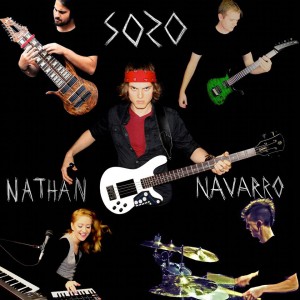 They Came From the Sky was more of a solo kind of deal. In this one, I was able to bring in some friends and some family and [I] just spent a lot more time on it per song. I’ve been wanting to do more of the rock side for a while. They Came From the Sky was a lot more electronic, with just me and Dylan and that was it. With this one I had drums, guitar, vocals, and all that kind of stuff.
They Came From the Sky was more of a solo kind of deal. In this one, I was able to bring in some friends and some family and [I] just spent a lot more time on it per song. I’ve been wanting to do more of the rock side for a while. They Came From the Sky was a lot more electronic, with just me and Dylan and that was it. With this one I had drums, guitar, vocals, and all that kind of stuff.
What’s the background with the album name? What is it’s importance to the finished product?
Sozo is the Greek translation for salvation in the New Testament. It’s like if you’ve heard that love can be translated many multiple ways – from agapé and ethos and a bunch of different meanings behind it – the same is true for the word salvation. For me and my Christian faith, that means diving deeper beyond the surface of salvation. It also means healing and wellness and prosperity and all those kinds of things. I think that’s something that God has been showing me this past year and a half more than ever before. That was the real inspiration behind the album.
The vibe of the whole EP feels like a concept album with lots of tension and release, especially with the last track. Was it planned out as a whole or did you just end up having some songs that fit together?
Yeah, it is. I somewhat planned it out that way. The last track is actually a cover of Ruby Frost’s “Oh That I Had.” So I was able to take what the previous artist had done with it and say, “I want to include that message and that song within my concept.” I had to kind of make parts fit here and there, but I wanted the whole thing to be the concept of Sozo and pinpoint different aspects of it throughout.
With the introduction of all these band members, how much of the album is written for them and how much did they co-write?
I wrote all the songs and then I had other people introduce things on top of it. Dylan wrote all the lyrics, then we worked on some of the lyrics and the melodies for the lyrics, but the structure was already there. For tracks like “Conquer,” I would write it out and send it to Felix and he would write a guitar solo. Then I would make modifications in the track to better suit his solo and to emphasize some of the cool things within that. So as far as the tracks, the backbone for each was there and I wrote those. Every time I heard back from somebody when they sent me their tracks, I would make small modifications to make it more cohesive and musical.
What is your overall composition process? There is a lot of intricate stuff happening throughout each of the tracks.
I think a lot of that has to do with the rewriting and adjusting over time, too. When I start off, I might just start with a bass line and a drum beat. When I get the vocal melody in or guitar solo in, then I’ll start to do the things where maybe I’ll quote something else like play the vocal melody in the bass line or just emphasize something a lot on the drums that the guitar is doing. Once I get all the instruments communicating in that way, it naturally becomes more intricate and complicated but in a way that I hope is more significant than random notes.
It definitely is cohesive, but there’s a lot of stuff to grab your attention.
Yeah. That’s what I love about most of my favorite songs and band and artists, so I wanted to do something like that myself. The writing and production of the whole album was very different for me. We didn’t go into the studio and track drums and then layer everything on top of it. It was just constant shifting here and there, little by little, and then at some point we just decided it was done.
The drums in particular on this album were very different because it was a mixture of live drumming – studio micing and all of that – and [sampled drums] on top of that. For instance, I saw a YouTube video of my friend Ana playing this groove in 7 that I wanted to use. The only problem was that it was very slow and it didn’t meet the tempo of the song. I ended up taking the YouTube audio and cutting it up and speeding it up and sampling it. That’s the drumming you hear on track 2, “Destiny.”
The rest is a mixture of one-shot samples and textures. Then I layered in a lot of the electronic kicks or snares to make it more punchy. So at all times on the album, the drums are a fusion of live playing, samples and just electronic MIDI programming. That was something I had never done before and it was a lot of fun.
[As far as effects] I did everything on the bass from the pedalboard as usual. The swells and drops are a mix of bass and electronics. For some of the drops, I’m just doing sub tones that aren’t really audible bass anymore. It’s just really boosting in the frequencies of 20-60Hz while everything else is just pretty much cut off. Then we’ll have some fast tapping passage where I bring the frequencies back in. A lot of the sounds are coming from the bass. I’m doing the wobble stuff, too. I really tried to emphasize the whole rock band/electronic fusion influence.
It sounds like a lot of experimentation.
It really was and I think that’s something that I’m probably most fond of the album for. It had a lot of experimentation as far as the production and the roles that we played with our instruments. It was something we hadn’t seen or done before too often.
You also have PDF downloads available of the written music for the album’s bass parts.
That was something I wanted to have for myself anyways. I like to go back to it because I’m always learning so much I want to have it written down so I don’t forget it. It maybe took me a week or two to write down. I used Guitar Pro software, which has a very easy workflow. It’s the first time I worked with the program and I was really impressed.
[Having the written music available] is something that Candyrat likes to do. They like to accompany their releases with sheet music because a lot of their listeners are musicians, too, that might want to play it. It was a win/win.
So that’s another new thing for you. How did the Candyrat relationship come around?
Candyrat has been awesome to work with. Rob is very friendly and helpful, too. Our relationship started maybe a couple years ago. He had originally been talking with me when I was in Pinn Panelle. That ended a couple years ago now. We had been wanting to do something together ever since then. It wasn’t until a year and a half ago that I had a chance. That’s when I started working on Sozo, and since then we’ve been in regular communication. It’s been fun.
How often are you playing out? You had Pinn Panelle for a while and you’ve always had your solo stuff, but it seems like you’re doing a lot more collaborating now.
I’d love to get out and play more. 2014 was mostly about doing studio work and production work. It’s great because I like to have albums out. It’s like a little notch in my timeline as far as my musical career, but I enjoy playing out the most.
How did you record the album? What kind of gear did you use?
I did it in a home studio. I have a Carvin Pro Bass 15 preamp. It came out in the ’90s and I think it had a short run, but I love the sound of it. I used two basses on the album. One was my Spector NS-2A, which is Korean-made, I think from 1985. It’s a cheaper bass but I do love the sound of it. My five-string I used on the album is the Alex Webster signature model, but I had it made with a maple fingerboard. I love the tone of a maple fingerboard because it makes it punch through a little more. The amp I’m using is the Ashdown ABM-500 head and a 4×10” cabinet.
I had tons of effects, like I usually do. [laughs] My pedal had all of the Soundblox 2 pedals from Source Audio, including the OFD (Overdrive Fuzz Distortion) and their relatively new Manta Bass pedal, which is like an envelope filter. For synth pedals, I had the Boss SYB-5, which I think is one of the more popular synth pedals for bass. I was also using the Line 6 M13, which I really dig. It’s a step up from the M9 I was using, but it’s great because it has so many features that allowed me through MIDI sends to bypass pedals that were not MIDI. It has a really cool effects loop that’s MIDI controllable. Basically, if I had a bunch of pedals I wanted to use but I can’t use too often without all the tap-dancing, I can use MIDI to bypass them. It’s one shot and it’s programmable, so it’s like a whole new board every time you hit it. I was sending MIDI with a MIDI Mate by Rocktron.
That’s a lot.
It’s something that I change so often that it’s hard for me to remember exactly what I had. For any tune, there’s an infinite number of ways to do it.
Do you have any pedals that just stay on your board?
The MIDI Mate, for sure. I also keep the Bass Envelope Filter Pro and the Multi-Bass Distortion Pro from Source Audio, as well as the Soundblox Hub, which is a kind of MIDI send device. Sometimes for me it’s all or nothing. Sometimes I’ll have all my pedals and use it for the more electronic genre, but when I play the majority of session works or gigs it’s just straight in.

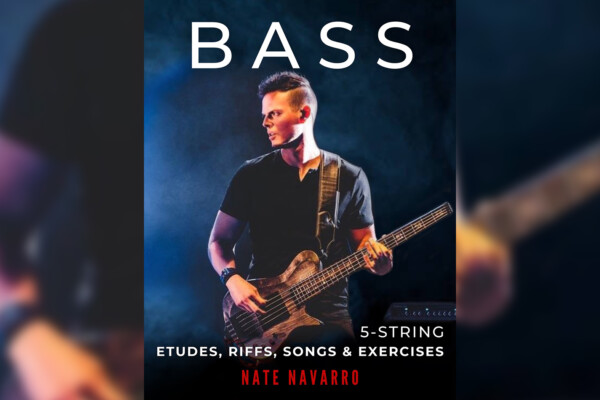
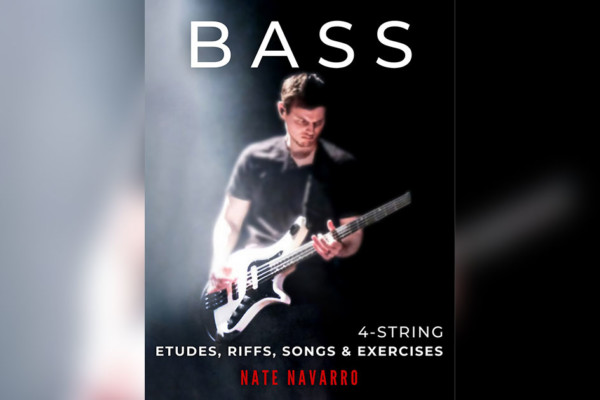
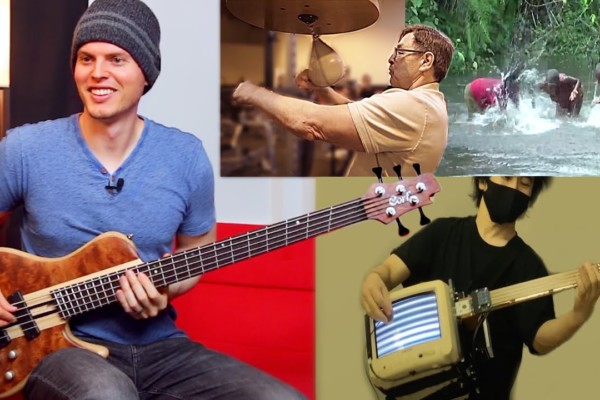
I like this song and it’s complexity. I can use this one in my Spin (indoor cycling) class.
what is that thing installed in his bass? that effect thing?
I believe it is a guitar wing made by livid instruments :)
looks like you are right. thanks!
Sounds fantastic, Nathan!
Thank you, Aaron! :)